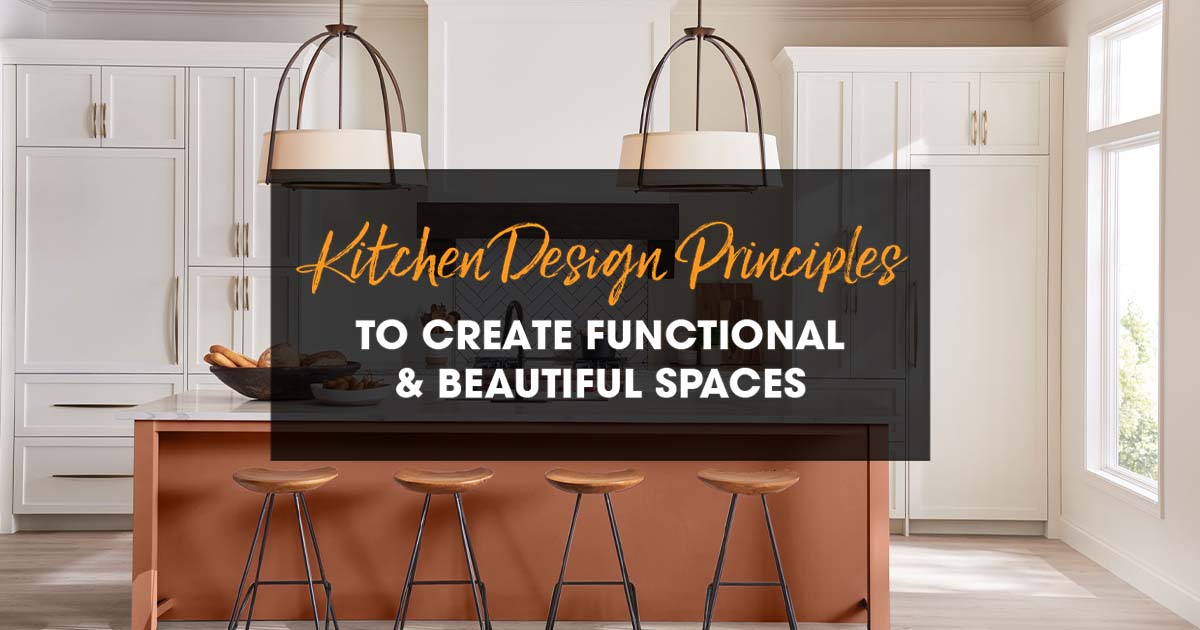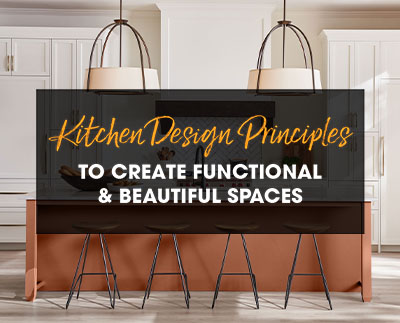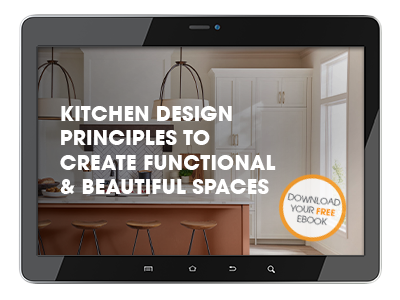
There are three main kitchen design principles that designers generally follow, whether knowingly or by instinct. These include kitchen work zones, the work triangle, and visual balance.
These three principles help create harmonious, functional and aesthetic kitchens, ones that clients appreciate not only for their beauty, but for simplifying and streamlining tasks performed in a kitchen.
It is important to note that these principles are not building regulations that must be followed; they are simply guidelines meant to help facilitate the design process.
Download this eBook to discover the three kitchen design principles that are prevalent in today’s design world and how they can help you create functional and beautiful spaces.
Download our Kitchen Design Principles eBook.
Kitchen Design Principles eBook
The topics covered in this eBook include:
- Work zones (food storage, prep area, cooking, cleaning, etc.)
- Purpose of a work triangle
- Ideal measurement and guidelines
- Kitchen island in a work triangle
- Focal points
- Symmetry
- Scale and proportion
Sneak Peek | Kitchen Work Zones
Work zones are areas within a kitchen that cater to specific tasks. If a kitchen designer decides to plan out a client’s kitchen with the work zones principle in mind, they will have to make sure the kitchen layout is divided by function. Each functional zone must also be properly equipped for the series of tasks at hand.
The 5 essential kitchen work zones are:
- Food storage (refrigerator, freezer, pantry, cupboards)
- Food preparation (cutting boards, mixing bowls, chopping knives, etc.)
- Cooking (cooktop, oven, cooking utensils, pots & pans, etc.)
- Cleaning and waste (sink, dishwasher, waste bins, cleaning supplies)
- Serving (cutlery, plates, glasses, coffee maker, mugs, etc.)
Food Storage
Food Preparation
Food preparation requires sufficient counter space as well as nearby drawers (or ones placed directly under that counter space) to store cutting boards, mixing bowls, knives, and other food prep utensils and tools such as a peeler, citrus squeezer, zester, measuring cup, etc.
If possible, the food preparation zone should be near—or stuck to—the kitchen sink, as food prep also entails washing fresh produce.
Download the full copy of our eBook to learn more about the three main kitchen design principles that can help you design functional and beautiful spaces.
Share this Post





